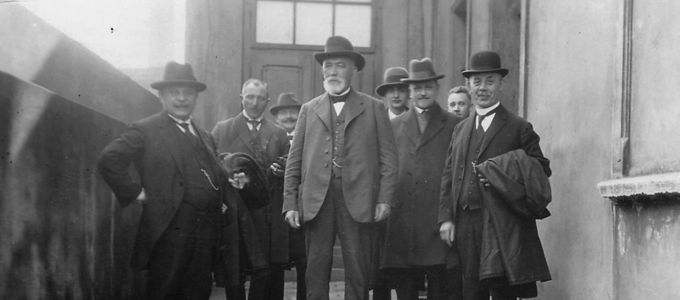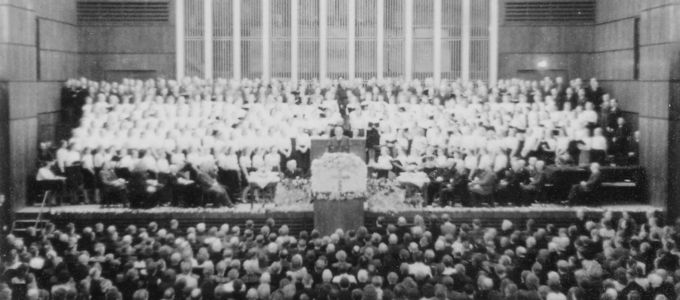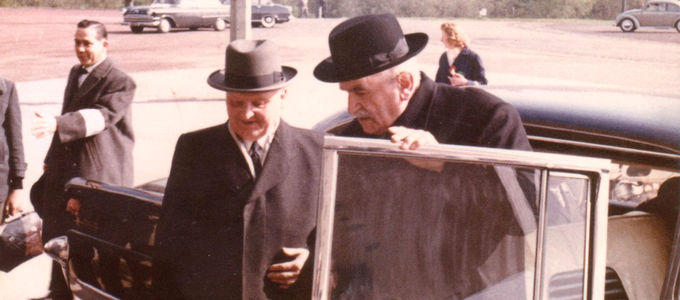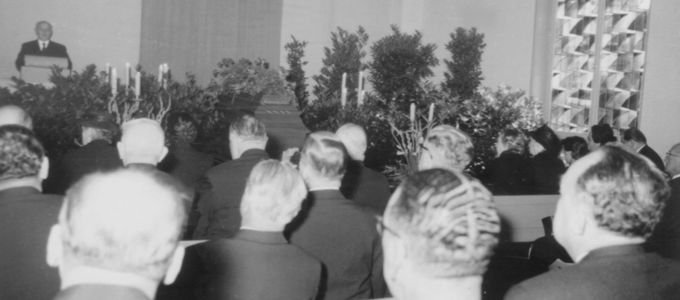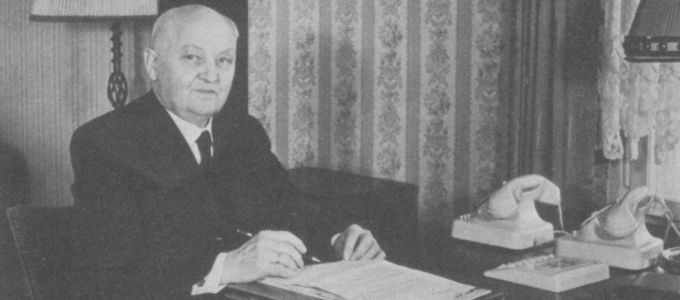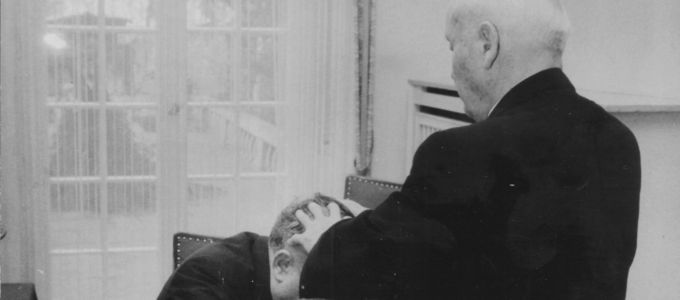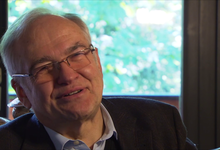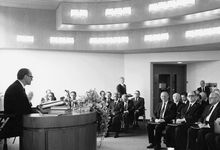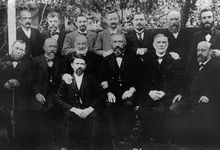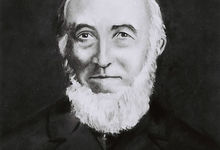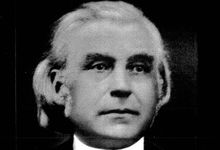His mission: to protect and keep
He led the New Apostolic Church out of a crisis and brought it forward. Chief Apostle Walter Schmidt would have celebrated his 125th birthday today. How did he cope with this crisis? An attempt at an explanation.
It was an ambitious legacy that Walter Schmidt inherited. On 6 July 1960, Johann Gottfried Bischoff died, the Chief Apostle who had announced that the return of Jesus Christ would take place during his lifetime. And now his successor had to take over the leadership of a shattered Church.
Turning inwards
“True to the words of the Chief Apostle, I will remain silent in the face of all the accusations coming from outside,” Chief Apostle Walter Schmidt said in his first divine service as president of the Church. He did not want to present any source of friction. He said that it was important not to look outside, but to look inside and concentrate on ourselves. To preserve, to maintain, and to complete—this is how he saw his task.
These programmatic words determined the path that this man, a Westphalian by birth, pursued: the New Apostolic Church closed itself off and concentrated on itself—with all the consequences: even going so far as to say no to the World Council of Churches that had issued an invitation to us in 1963 for exploratory talks.
Seasoned in dealing with conflicts
In order to understand this better, we need to go back and take a closer look: Walter Schmidt was one of the Apostles who advised Chief Apostle Bischoff to name a successor in the late 1940s. He intervened in the sense of a mediator. “He is the youngest Apostle in the ministry, but a very calm and objective man,” Chief Apostle Bischoff said about him in a letter in March 1948. Already here we see how hard Walter Schmidt tried to protect the Chief Apostle ministry from possible harm.
It was not long after that the then Apostle Schmidt made his first experiences in resolving conflicts—in fact, a whole series of them. It started in 1949 in Saarland, continued in 1954 in the Netherlands, and in 1955 in the Rhineland. It bordered on the intolerable for him whenever he felt that the Chief Apostle ministry was being called into question. These were points he would address, as circulars to the Apostles from the first years of his time as Church president show.
Giving a structure
Could he have taken a different route? This is something that historians will have to argue about, but one thing is certain: “All things considered, the spiritual crisis that was triggered with Bischoff’s death was short-lived,” a Protestant religious scholar stated toward the end of 1960. “The New Apostolic Church continued to be a firmly rooted whole and withstood all advances and moves from within the Church and from outside.”
In fact, instead of shrinking or even collapsing altogether, the Church recorded significant growth in the fifteen years under Chief Apostle Schmidt. The membership doubled to about one million, the number of countries with their own congregations doubled to 120.
And finally, Chief Apostle Schmidt launched organizational measures that consolidated the Church in many areas. He made it possible that Apostles can work for the Church full-time. He launched a choir book and religious instruction material. And he gave the Church a uniform face, an identity, with a common emblem. These were the foundations on which his successors were able to build and lead the Church into a new era.
Article info
Author:
Date:
Keywords:
Andreas Rother
21.12.2016
Chief Apostle,
emblem NAC,
Doctrinal instruction,
Music,
People/Personalities


